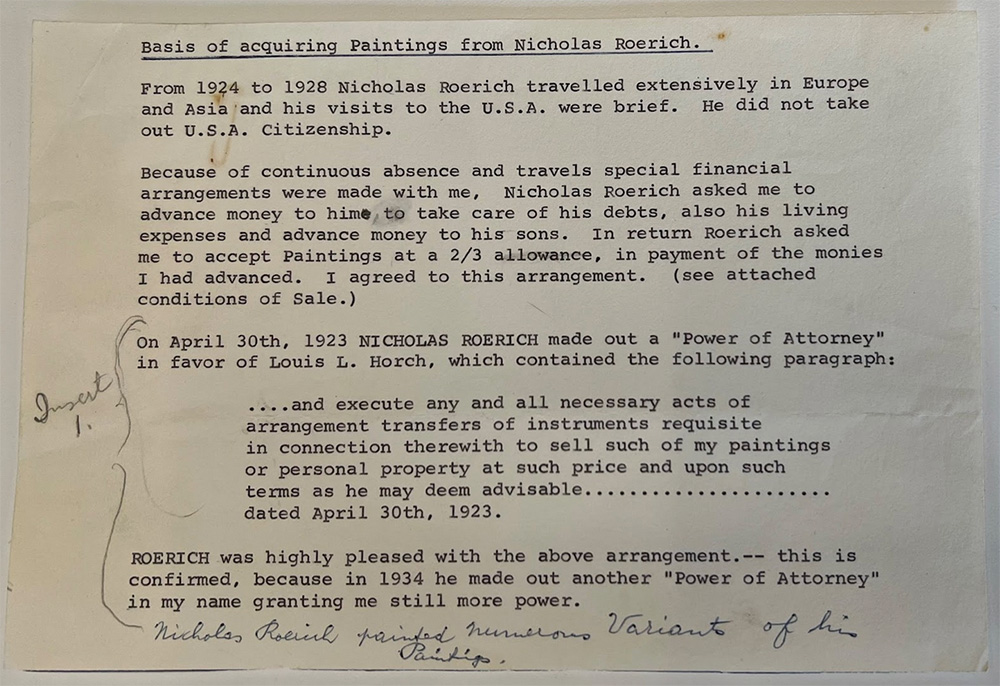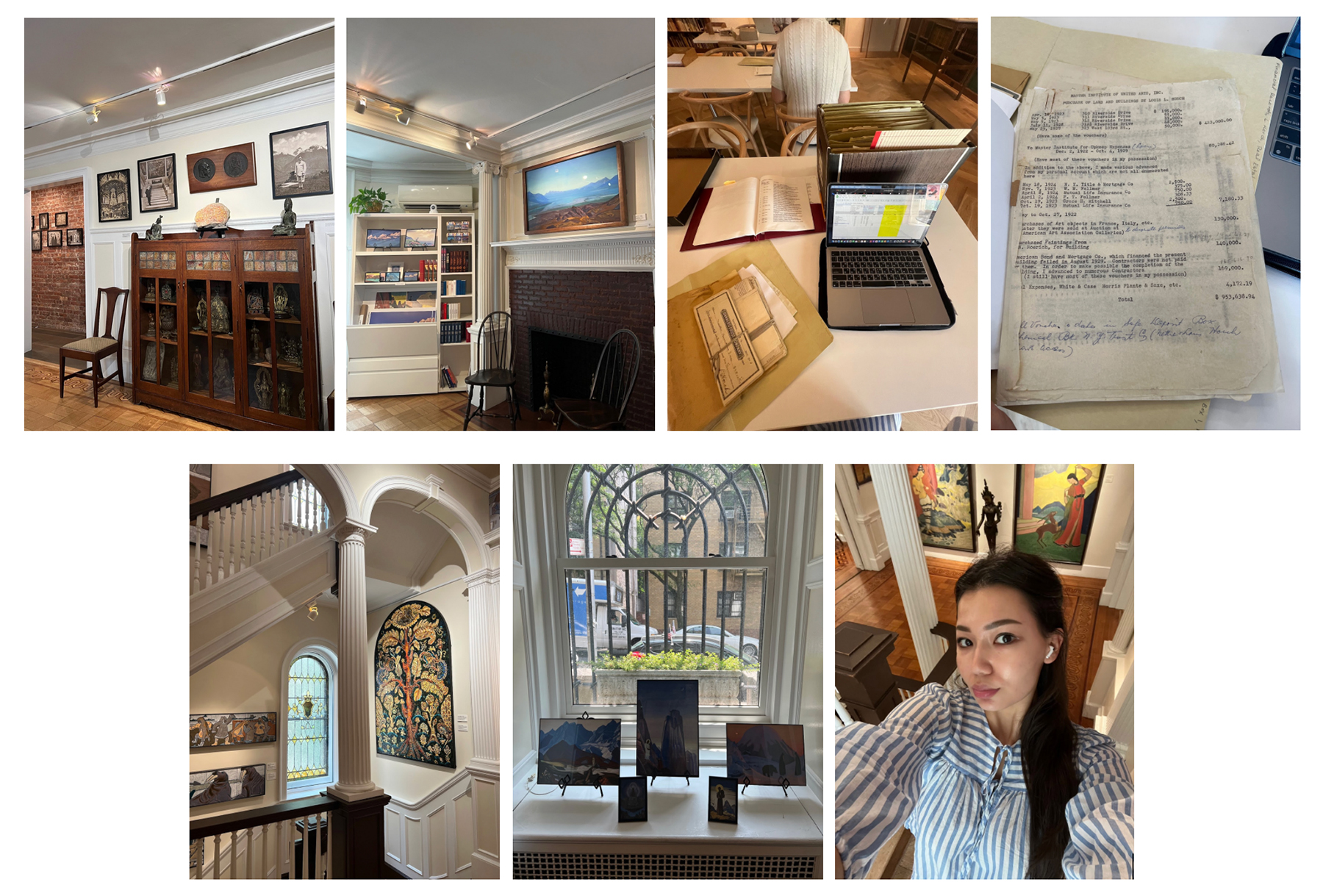Exploring the Mystical World of Nicholas Roerich: Unveiling the Horch-Roerich Relationship
By: Albina Muratovna (Jambulatova), ’26
Date: July 7, 2023
I was taken on a fascinating journey this summer at the Amherst College Russian Culture Center into the engaging world of Nicholas Roerich, a painter whose ethereal canvases have had a lasting impression on the field of art. Nicholas Roerich, a brilliant artist whose works defied traditional limitations, was born in Russia in the late nineteenth century. He attempted to depict the fundamental link between humans and the natural environment by drawing on Eastern and mystical traditions for inspiration. His bright paintings captured viewers' imaginations and inspired awe with their spiritual depth and invitation to explore worlds beyond the visible.
Roerich was deeply interested in spiritual and esoteric subjects, including Theosophy and Eastern philosophies. He developed his own mystical system called Agni Yoga, which blended various spiritual teachings.Roerich traveled extensively throughout Central Asia, particularly in regions such as Tibet and the Himalayas. He collected artifacts and studied local traditions, often incorporating them into his art and spiritual teachings.
Roerich’s artistic talents extended beyond the confines of the canvas— he was a visionary advocate of cultural heritage preservation. After World War I, he created the Roerich Pact, a revolutionary agreement designed to protect cultural institutions, scientific research centers, and historical sites from harm during times of armed conflict. This forward-thinking project recognized the significance of the world’s cultural riches and the necessity for protecting them from the destruction of war. President Franklin D. Roosevelt signed the Roerich Pact in 1935.
The ACRC holds papers related to Roerich’s relationship with Louis Horch, Roerich’s benefactor who provided the funds required for their ambitious initiatives. Roerich was able to go on expeditions to far parts of the globe in order to search for the hidden beauty and spiritual essence of ancient cultures thanks to Horch's kind financial support. Horch and Roerich also founded multiple institutions in New York, including the Master Institute, the Roerich Museum, and the Corona Mundi art center. These institutions were housed in the Master Building, a skyscraper on the Upper West Side that Horch built for Roerich in 1929. However, their relationship fell apart in the mid-1930s. Horch sued Roerich for unpaid debts, and he renamed the Roerich Museum the Riverside Museum.

Basis of acquiring Paintings from Nicholas Roerich
As I delve into the legal and financial documentation of Roerich’s relationship with Horch, a fascinating narrative unfolds, giving us a glimpse into the lives and relationships of the individuals involved. The documents reveal that from 1924 to 1928, Roerich extensively traveled in Europe and Asia, with brief visits to the U.S. Despite never acquiring US citizenship, Roerich made special financial arrangements with Horch, who provided funds for Roerich's debts, living expenses, and even advanced money to his sons. One intriguing find is Roerich's agreement with Horch, where he offered his paintings at two-thirds the price in return for the money advanced to him (from Louis Horch memos and draft letters folder). These documents give us a unique perspective on the interplay between art and finance in Roerich's life.
Because the papers focus on Horch, the archive is largely silent about Roerich's side of the story, which poses a challenge in fully comprehending the nuances of their relationship. The absence of Roerich's voice creates a gap in our understanding, leaving us with unanswered questions.
Understanding the complexities of Roerich's life requires a nuanced approach. While some considered him a con man, it is essential to acknowledge the numerous followers and admirers who found solace and inspiration in his artistic and spiritual teachings. Evaluating Roerich's contributions involves weighing the impact of his ideas, the legacy of the Roerich Pact, and the ongoing dialogue surrounding cultural appropriation and ethical concerns. It is through a careful examination of these facets that we can gain a deeper understanding of this complex figure.

Source:
Robert C. Williams, “Mysticism and Money: Nicholas Roerich,” in Russian Art and American Money, 1900-1940